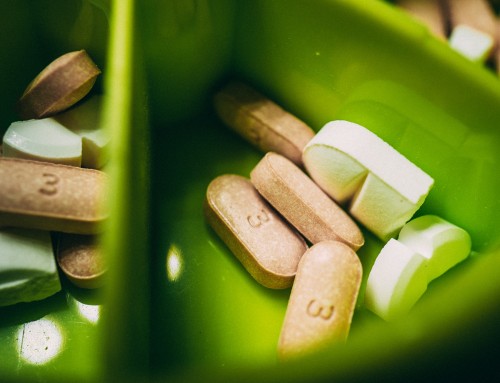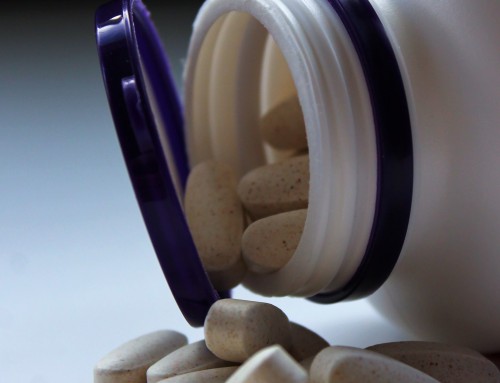WADA – Are they Helping the Athlete or Harming the Athlete?
In order for a substance to be banned, The World Anti Doping Agency (WADA) states that it needs to satisfy at least two of the following three categories:
- It has the potential to enhance or enhances performance
- It poses an actual or potential health risk to the athlete
- Use of the substance violates the spirit of sport (outlined in the WADA code)
There are certain substances that are banned by WADA, namely; steroids and human growth hormone, the latter not actually considered to be performance enhancing. These substances will have a detrimental effect to an athlete and can cause serious health issues.
It can be argued that some other banned substances do not have any potential to enhance performance and when taken appropriately do not pose any risk to the athlete’s health. In this article, we want to ask the question, is an athlete’s health the primary focus for WADA?
1 – Potential to Enhance or Enhances Performance
If we go back to the categories of what constitutes a banned substance the first is a potential to enhance performance. Caffeine is one substance that has been put on and taken off the prohibited list in recent years and is currently not banned by WADA. When taking a closer look at caffeine however, it’s hard to understand why it is not on the list.
Caffeine’s main use is as a stimulant and has been shown to enhance performance on both the aerobic system, (1), and the anaerobic system, (2,3). Mark Glaister, an exercise physiologist has stated that “of all the legal supplements an athlete could take, it has the biggest effect on performance”.
This increase in performance is as a result of an increase of calcium within the muscle which creates a greater muscle force production, (4,5). It is also suggested that caffeine activates the CNS, (which alters neurotransmitter function) and skeletal muscles by recruiting more motor units (2,6,7).
2 – Poses an Actual or Potential Health Risk to the Athlete
The second category for banning a substance is an actual or potential health risk to the athlete. The evidence showing the dangers of caffeine are widely established and they range from moderate symptoms such as high blood pressure and headaches (8) to increased risk of heart attack and fatalities (9).
Despite this substance falling into two of the three categories, WADA maintains its position that caffeine is not currently a banned substance. This begs the question, why is WADA happy for athletes to take as much caffeine before a sporting event?
One potential solution to the problem of caffeine would be for WADA to set safe limits of caffeine. If an athlete is tested and is found to be over the ‘safe limit’ threshold then a ban would be served on safety grounds. This would, in our opinion, make moral sense as it could stop fatalities like the case of teenager Logan Stiner who died from taking a lethal dose of caffeine. There are ways in which to test caffeine in an athletes system, which can be done by blood or urine tests.
3 – Spirit of Sport Philosophy & Meldonium Controversy
On January 1st 2016 WADA placed meldonium on the list of prohibited substances and has since banned over 200 athletes for taking the substance. The recent controversy of meldonium is that many have questioned the reason for why it has been placed on the prohibited list. Looking back again to WADA’s criteria for banning substances, does it pose a health risk to athletes and does it enhance performance? according to one study (10), neither of these are true. Don Catlin of UCLA claimed that substantial doubt exists that these drugs enhance performance.
“I do not believe that meldonium has been shown to enhance performance,” says Catlin.
Asserting that WADA now boasts the resources to test for performance-enhancing qualities—but apparently conducted no such analysis of meldonium.
Catlin said, “technically it should not have been banned.”
In the high profile case of Maria Sharapova, who was banned for taking meldonium, it was claimed that she had taken the substance due to having irregular ECG’s and a magnesium deficiency.
If athletes are taking this substance for health reasons then they should be entitled to apply for a therapeutic use exemption (TUE). This has not yet been possible and as a result athletes are potentially putting their health at risk by having to choose between taking necessary medication or being eligible (in the eyes of WADA) to participate in sport. For many athletes this can be an impossible choice.
Painkillers
Analgesic drugs or painkillers are used in sport on a regular basis. These drugs have the potential to numb the pain of an existing injury.
NFL lineman Matt McChesney said that “a shot in your butt cheek before a game (and you) feel like frickin’ Superman when you walk on the field. Everything is numb. You feel great!”.
Pain, however is your body’s way of telling you ‘it’s time to stop’. By numbing pain and allowing athletes to continue there is an increased chance of further injury and risk to health.
Complications associated with Toradol, a painkiller include potential kidney failure, liver damage and gastrointestinal bleeding as well as an increased risk of heart attack and stroke (11, 12,13). Moreover, this drug inhibits platelet function, creating a danger of brain bleeding for players who suffer head injuries while the drug is in their system (14).
When referring back to the three categories that WADA considers to be a cause to ban a substance, painkillers appear to fall into two. Firstly, some painkillers, as covered above have been shown to pose a health risk. In addition to this, painkillers mask the pain of an injury that could get worse if athletes continue to compete. The second argument is that painkillers actively enhance performance. This could be debated, but in essence, a painkiller helps an athlete perform at a higher level than they would otherwise be able to, due to injury or pain.
So, does WADA care about health?
With the topics that have been discussed throughout it is clear to see that there are substances that WADA is allowing athletes to consume that can damage health and enhance performance.
There are several questions that need to be answered such as;
- The meetings in which substance bans are decided are held privately with no public access, why is this such an opaque process?
- What is wrong with a substance that can enhance performance?
- Why is a subjective term like ‘spirit of sport’ used as a condition when it can be interpreted to suit any number of arguments?
- The health of the athlete should be paramount, If a substance can harm or has the potential to harm an athlete but does not enhance performance why is it not banned straight away?
References
1 – Jackman, M., Wendling, P., Friars, D. & Graham, T. (1996). Metabolic, catecholamine, and endurance responses to caffeine during intense exercise. Journal of Applied Physiology, 81 (4), 1658—1663
2 – Kalmar, J. M & Cafarelli. E. (1998). Effects of caffeine on neuromuscular function. Journal of Applied Physiology, 87(2), 801-808.
3 – Greer, F., Mclean, C. & Graham T. E. (1998). Caffeine, performance, and metabolism during repeated Wingate exercise tests. Journal of applied physiology, 85 (4), 1502-1508.
4 – Lopes, J. M., Aubier, M,. Jardim, J., Aranda, J. V. & Macklem, P. T. (1983). Effect of caffeine on skeletal muscle function before and after fatigue. Journal of Applied Physiology. 54(5), 1303–1305.
5 – Tarnopolsky, M. A. (1994). Caffeine and endurance performance. Journal of Sports Medicine, 18(2), 109–125.
6 – Bruce, C. R., Anderson, M. E. & Fraser, S. F. (2000). Enhancement of 2000-m rowing performance after caffeine ingestion. Journal of Medicine and Science in Sports and Exercise, 32 (11), 1958–1963.
7 – Wilson, D. F. (1975). The effects of caffeine on neuromuscular transmission in the rat. Journal of Applied Physiology, 225(4), 695 – 704.
8 – Jee, S. H., He, J., Whelton, P. K., Suh, I., & Klag, M. J. (1999). The effect of chronic coffee drinking on blood pressure. Hypertension, 33(2), 647-652.
9 – Berger, A. J., & Alford, K. (2009). Cardiac arrest in a young man following excess consumption of caffeinated “energy drinks”. Med J Aust, 190(1), 41-43.
10 – Suzic Lazic, J., Dikic, N., Radivojevic, N., Mazic, S., Radovanovic, D., Mitrovic, N., … & Suzic, S. (2011). Dietary supplements and medications in elite sport–polypharmacy or real need?. Scandinavian journal of medicine & science in sports, 21(2), 260-267.
11 – Coupland, C. (2005). Painkillers linked to increased heart attack risk. Expert Rev. Cardiovasc. Ther, 3, 4.
12 – Gupta, K., & Khurana, S. M. (2014). The painkillers–what we must know!. Biotech Today: An International Journal of Biological Sciences, 4(2), 55-58.
13 – Rodríguez, L. A. G., Cattaruzzi, C., Troncon, M. G., & Agostinis, L. (1998). Risk of hospitalization for upper gastrointestinal tract bleeding associated with ketorolac, other nonsteroidal anti-inflammatory drugs, calcium antagonists, and other antihypertensive drugs. Archives of Internal Medicine, 158(1), 33-39.
14 – Concannon, M. J., Meng, L., Welsh, C. F., & Puckett, C. L. (1993). Inhibition of perioperative platelet aggregation using toradol (ketorolac). Annals of plastic surgery, 30(3), 264-266.




